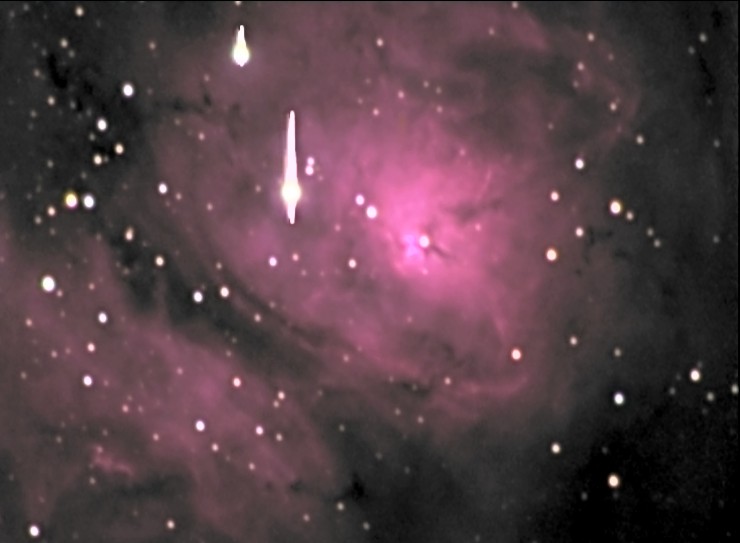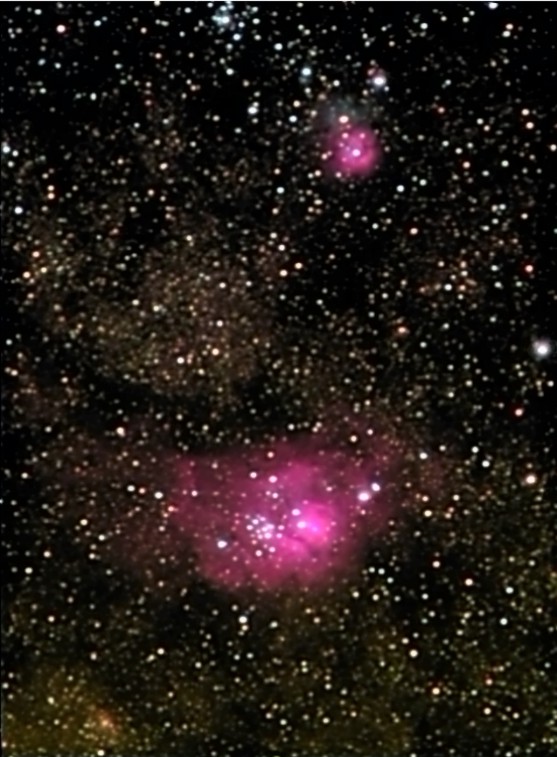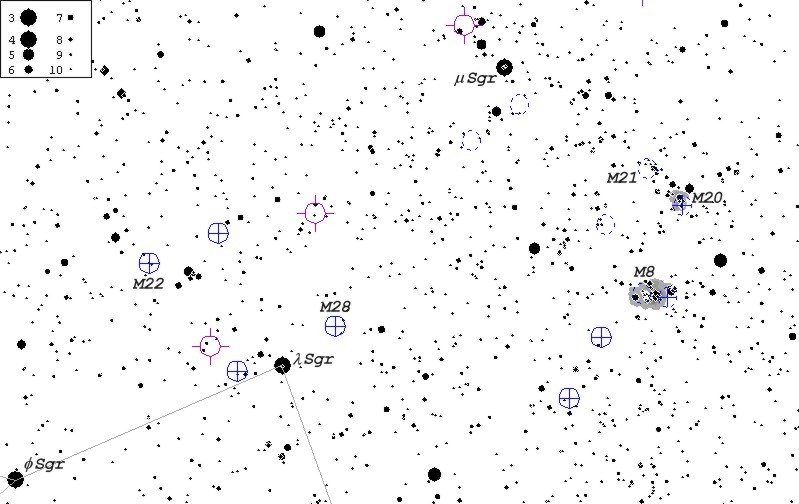
M8 = NGC6523 ( 18h 03.8m -24°23´, ~4 mag )

Lagoon Nebula was discovered in 1747 by Le Gentil but its associated open star cluster NGC6530 was noticed by Flamsteed in 1680. Messier observed it on May 23, 1764. This young star forming region (NGC6530 formed some 2 million years ago) is located some 5,200 ly away and measures over 100 ly across, . Hourglass Nebula (see below) in its center probably represents a massive outflow from newly formed star, while located next to it star Herschel 36 constitutes main source of radiation nebular gas to glow. Lagoon Nebula takes second place only to Great Orion Nebula (M42) and can be found with binoculars about 5°30' W of l Sagittarii (see finder chart below). Another spectacular Messier object - Trifid Nebula (M20) - is located just 1.5° N of Lagoon.
The above image is a composite of a color slide taken on May 15, 1996 from Texas Star Party near Fort Davis, TX (30 min. exposure on Ektachrome P1600 through Celestron Ultima 8 SCT f6.3) and a CCD mosaic taken with Cookbook 245 LDC CCD camera (4 tiles, each composed of 5 x 1 min. white exposures through Ultima 8 SCT f3.0) acquired from StarFest near Mount Forest, Ontario on August 25, 2000. CCD image was processed with AIP4WIN and combine with scanned color slide using RegiStar software.
North is up.
The image below was taken on July 18, 1998 from Sooke, BC. Cookbook 245 LDC CCD camera was used on Ultima 8 f6.3 telescope autoguided with Cookbook 211 LDC CCD camera on piggybacked 500mm f8 telephoto lens. It is composed of white exposures (5 x 1 min.) as well as cyan, magenta and yellow-filtered integrations (3 x 1 min. each) were combined with AIP4WIN. The color image was then re-processed in Lab color space using Corel PhotoPaint 8.
North is up.

Wide-angle view below was acquired with 135mm f4 telephoto lens attached to Cookbook 245 LDC CCD camera (piggybacked on Celestron Ultima 8 SCT telescope) on May 23, 1999 from Sooke, BC. Seven white exposures (120 sec. each) as well as cyan, magenta and yellow-filtered integrations (3 x 120 sec. each) were combined with AIP4WIN. The color image was then re-processed in Lab color space using Corel PhotoPaint 8.
Trifid Nebula (M20) is visible near the top as well as streaks of dark nebulosity around Lagoon Nebula. North is up.


Map created in Guide 7.0 - 7°45' x 12°. North is up.
Number of visitors:
© Jan Wisniewski